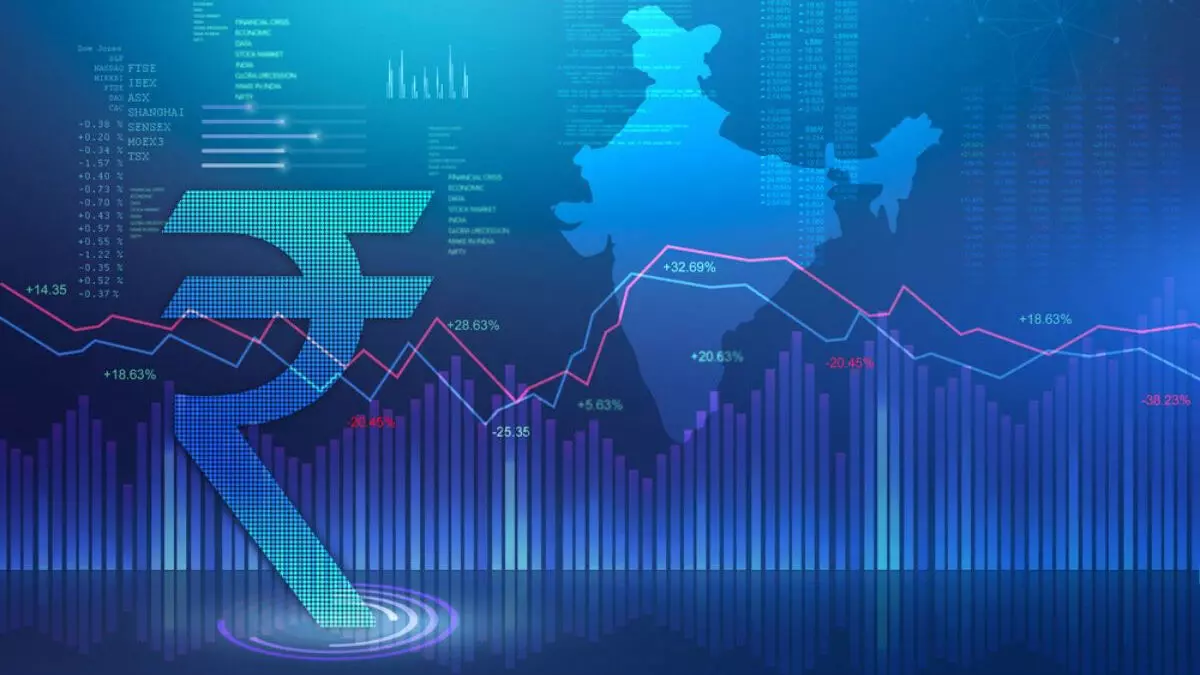India’s 7.8% growth meets its harshest test

New Delhi: India’s economy has once again confounded expectations. In the first quarter of FY26, gross domestic product expanded by 7.8 per cent year-on-year — the fastest pace in five quarters, and well above consensus estimates of around 6.7 - 6.8 per cent. Manufacturing rose 7.7 per cent, its best showing in five quarters, financial services surged 9.5 per cent, consumption climbed to 7 per cent, and agriculture managed 3.7 per cent. Exports grew 6.3 per cent while imports shot up 10.9 per cent, leaving net exports flat.
On paper, these numbers look like an economy firing on all cylinders. Scratch the surface, however, and the glow dims. Much of the growth is flat-tered by weak inflation, aggressive state spending, and a frontloaded investment push. At the same time, the external backdrop has turned hostile, with punitive tariffs from the US threatening to choke India’s export engine. The celebrated surge may well be a statistical high-water mark before global headwinds and domestic fatigue set in. According to Bank of America Securities (BofAS), nominal GDP slowed to 8.8 per cent from 10.8 per cent in the previous quarter, while the GDP deflator collapsed to just 0.9 per cent, the lowest in nearly six years. The first uncomfortable truth is that part of the 7.8 per cent growth is an accounting artefact. Real GDP is inflated when nominal growth is weak but the deflator collapses, as it did this quarter. Incomes, corporate revenues, and tax collections follow nominal growth, which is running below 9 per cent — hardly the stuff of economic miracles. A supposedly roaring economy looks less formidable when one realises its headline number is built on thin price distortions.
The greatest risk lies in trade. Exporters may have rushed shipments in anticipation of US tariffs, cushioning the quarter’s numbers. That respite will vanish in subsequent quarters. A 50 per cent tariff on Indian goods is not a marginal nuisance but a direct strike on industries that anchor employment and foreign exchange earnings. Textiles, leather, and engineering goods are set to feel the squeeze first. Margins will shrink, competitiveness will erode, and job losses will follow. Imports, already rising faster than exports, add another pressure point. If the trade deficit widens as tariffs bite, the rupee will weaken further, aggravating imported inflation. An economy that depends on exports for one-fifth of its output cannot shrug off such shocks. Private consumption grew a solid 7 per cent in the quarter, buoyed by tax relief, rural resilience, and a rebound in discretionary spending on travel, hospitality, and lifestyle products. This fuelled the services boom, particularly in trade, hotels, transport, and financial services. But the durability of this trend is questionable. Households may hold back on major purchases until GST rationalisation comes through, muting demand in coming quarters. More worrying, if tariffs lead to layoffs in labour-intensive sectors, consumer sentiment could turn quickly. What looks like robust demand today could weaken once job insecurity spreads.
Gross fixed capital formation rose 7.8 per cent, but this resilience was almost entirely state-led. Nearly a quarter of the annual capex budget was spent in just three months, a frontloaded strategy designed to support activity. Without this fiscal thrust, investment demand would have faltered. This is unsustainable. The government cannot keep propping up the cycle indefinitely. Revenues are already stretched, and further concessions like GST cuts will strain the fiscal position. If private firms do not step up with meaningful investments, the capital formation story will stall, leaving growth vulnerable just when external shocks intensify. Services were the quarter’s star performer, expanding by over 9 per cent. Public administration and real estate rode on fiscal largesse, while IT and professional services held up exports. But the momentum rests heavily on consumption and government spending, both of which face limits. Agriculture grew 3.7 per cent, slightly below expectations. While healthy reservoirs, food stocks, and prices offer some stability, the sector remains hostage to the monsoon. Rural India continues to underpin consumption, but agriculture alone cannot pull the economy forward. The strong headline number creates a policy dilemma. On the one hand, it reduces pressure on the central bank to ease rates. On the other, growth is being flattered by a statistical quirk and heavy fiscal spending. Inflation is low, but the rupee is sliding, raising risks of imported costs. With fiscal space already frontloaded, room for further stimulus is limited.
The toolkit — GST rationalisation, rupee depreciation, and possible rate cuts if growth falters — is constrained. Each carries risks: GST cuts erode revenues, a weaker rupee fuels inflation, and rate cuts are politically contentious when growth appears robust. Despite the impressive print, sustainability is the real test. Growth built on deflators, fiscal largesse, and temporary boosts cannot withstand prolonged global shocks. If tariffs persist, firms will cut jobs, defer investments, and scale back production. Domestic demand will weaken, supply chains will strain, and the comforting assumption of 6.5–7 per cent growth will crumble. India has dazzled with quarterly numbers before, only to stumble later. Without deeper reforms to spur private investment, diversify exports, and strengthen fiscal credibility, the economy will remain vulnerable. The danger lies not in one quarter’s performance but in the complacency it breeds. India today wears a crown of numbers. At 7.8 per cent, it is the fastest-growing major economy once again. But the jewels in this crown — a collapsed deflator, frontloaded state spending, and fragile consumption — are brittle. Exports face the headwinds of tariffs, agriculture remains weather-bound, and private investment is still tentative. The question is not whether India can grow 7.8 per cent for one quarter. It already has. The real question is whether it can sustain even 6 per cent growth when the crutches are removed and external blows land fully. For now, the growth story sparkles. But unless India builds deeper structural resilience, the glow may fade faster than policymakers care to admit.



